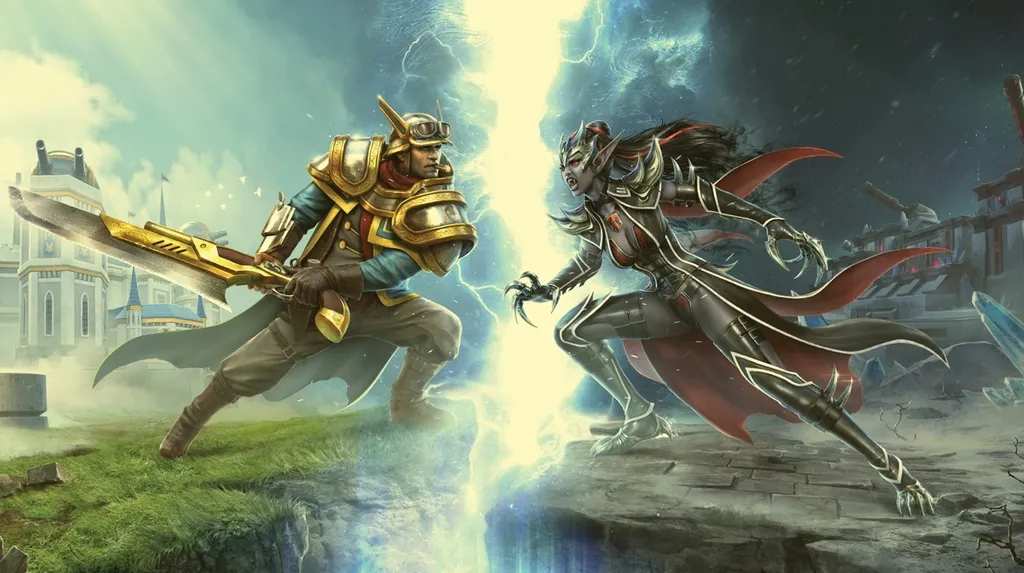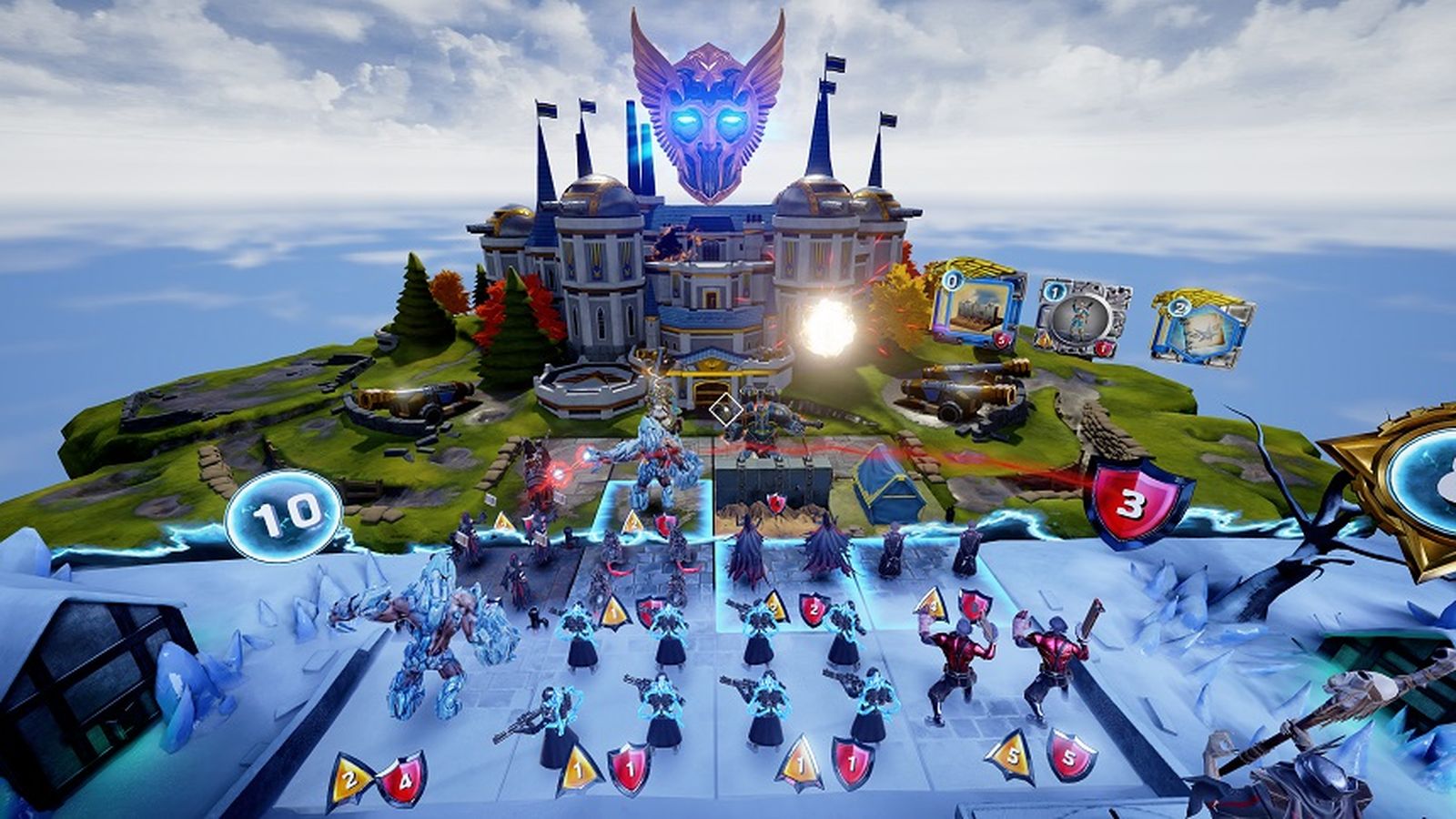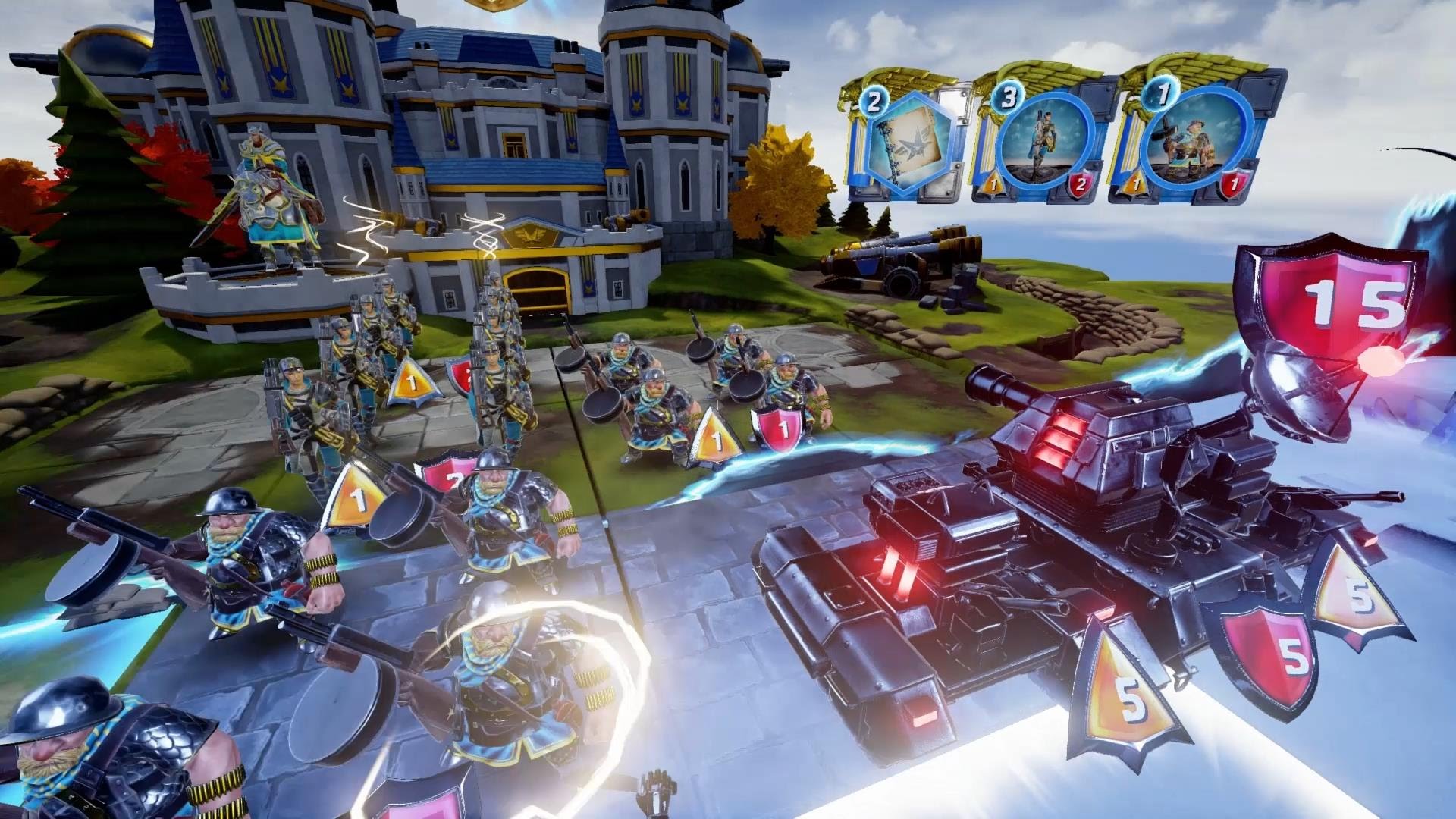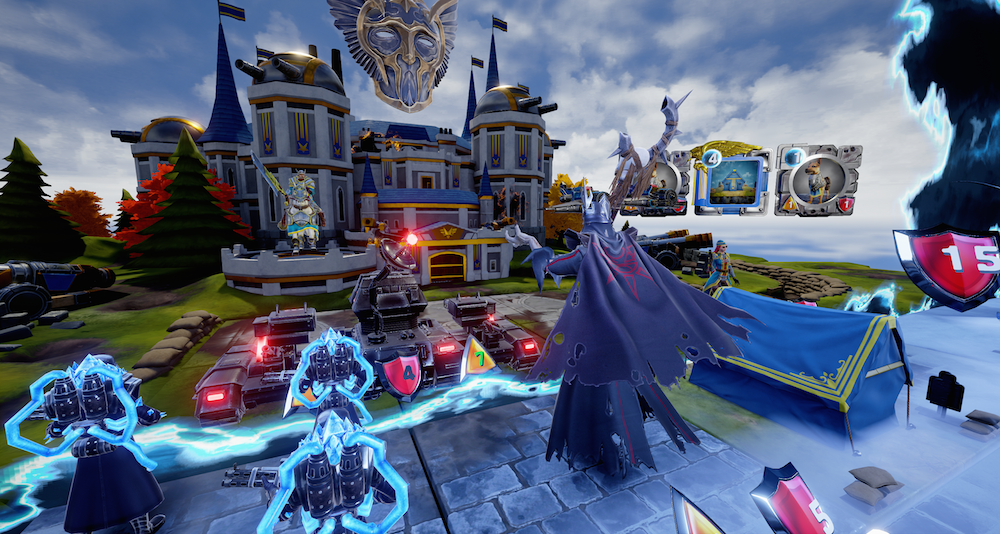Back when we first covered Dragon Front’s announcement in February of this year, not much was known about the game. For all intents and purposes, it was shaping up to be a wonderful and detailed representation of collectible card games (CCG) like Magic: The Gathering and Hearthstone, except adapted to fit in a unique medium like VR.
In many ways, that’s accurate. Dragon Front’s core gameplay consists of drawing cards that represent creatures and abilities, then playing them on the battlefield. You have to attack your enemy to defeat them. Your deck is themed after which faction you choose. On paper, it could be mistaken for Blizzard’s market leading digital CCG, or Wizards of the Coast’s Magic, but it actually delivers new wrinkles to the experience that we’ve never seen before. Even still, we can’t help but think the physical card game they built first looks awfully similar.
“Something that really sets this game apart from other CCGs is the focus on the field and strategically moving units around,” said Keith Hladik, Producer at High Voltage. “You have to really plan for the end game from the very start, using your specific faction’s advantages.”
Dragon Front doesn’t use an open playspace design such as Magic or Hearthstone. Instead, the field is split into a 4×4 square with two rows on each player’s side of the battlefield. The row closest to the player is the spawn row, with two middle rows between them. It reminds me a bit of Mage Wars, from Arcane Wonders.
That alone opens up tremendous tactical opportunity. Rather than being able to easily flood the battlefield with units, you’re required to play the game with a more tactical mindset. It feels like a cross between a CCG and Chess, forcing you to manage lanes and troop movement just as you do your mana pool.
Speaking of which, the mana generation mechanic is flipped on its head as well. While mana is still used as the resource to play cards from your hand, you don’t simply generate one more mana than you had last turn, such as with Hearthstone, or play mana cards such as in Magic.
“One of the biggest challenges we faced, was designing the mana system,” said Hladik. “We didn’t want to just have a standard mechanic where you gain one more max mana per turn, so by the end you’re flushed with mana every time as the games on. It didn’t fit with the philosophy of the rest of the game.”
During one of my demo matches, this added complexity hit me square in the face. Since I hadn’t customized this deck or studied the faction’s specialties at all before diving in, I was playing a bit blind. My go-to strategy was to spawn as quickly as possible and go on the offensive, which didn’t work out well in my favor.
Since you generate mana through a mixture of fortifications and creature abilities, as well as stationing units in the spawn row and leaving them there, by the end of the match I was out of mana entirely. Once I was out of units to hold the spawn row, my wells were dry.
“We keep a close eye on analyzing which types of decks are winning more than others and even going so far as to which individual cards are having higher success rates,” said Hladik. “While we can adjust those things on the fly — tweaking stats and abilities — we don’t want to get in the habit of changing the game’s base mechanics too much.”
The core game, once available in beta, will be heavily focused on multiplayer. Dragon Front features a voice-acted tutorial with good insight into how to play the game and to strategically plan, as well as a practice mode where you can tee up matches against specific factions or decks.
“We will have an XP-based ranking system for multiplayer that’s very similar to Hearthstone’s,” explained Hladik. “We have daily missions that you can play every day that take the form of, for example, ‘Win with this faction 3 times,’ or something like that. We’ll deliver one of those per day for now and you’ll be awarded a certain amount of gold for completing those, as well as winning, and losing in matches. No gold for conceding or disconnecting, though.”
It’s a simple system, but it’s easily scalable and can be expanded over time. Often, the simplest and easiest to understand areas of a game are the most addicting, as they draw people in, and provide an incentive to keep playing after they understand the complexities.
Rows, lanes, strategic depth, mana balance, and more all coalesce together to establish Dragon Front as a unique game in an otherwise crowded genre. The mechanics of playing cards to summon creatures and managing a pool of mana as a resource are familiar to anyone that’s played a CCG before, but the implementation of a more tactical meta-game feels like a breath of fresh air.
Dragon Front is now accepting sign ups for Closed Beta, which will be starting “very soon.” Everyone that purchased the studio’s recently released Damaged Core are also granted Beta access.
An Open Beta period will follow that, before full release. The game will be free to download and play, with card booster packs and (potentially) new factions available for purchase. Dragon Front will also include cross-platform multiplayer between the Rift and Gear VR, once available.
While waiting for Dragon Front, Ascension VR is also worth giving a look.




























